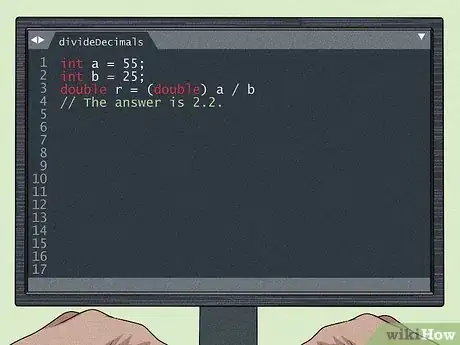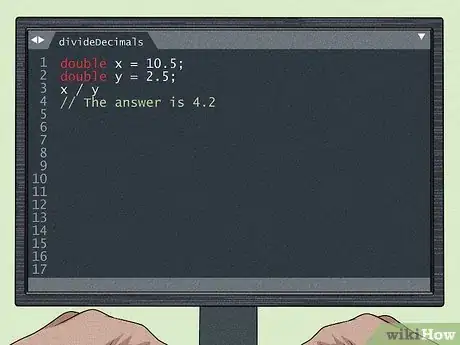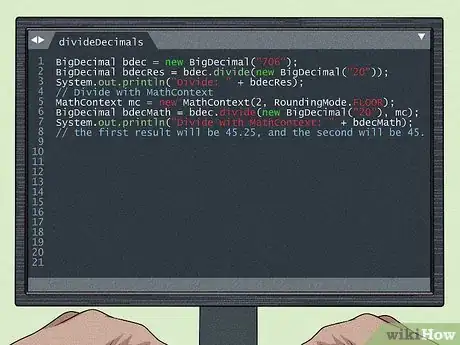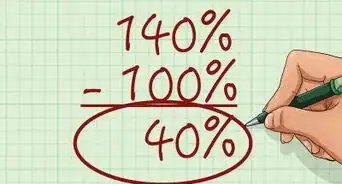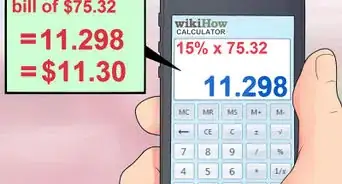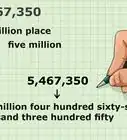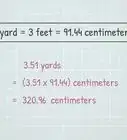This article was co-authored by wikiHow staff writer, Nicole Levine, MFA. Nicole Levine is a Technology Writer and Editor for wikiHow. She has more than 20 years of experience creating technical documentation and leading support teams at major web hosting and software companies. Nicole also holds an MFA in Creative Writing from Portland State University and teaches composition, fiction-writing, and zine-making at various institutions.
This article has been viewed 34,523 times.
Learn more...
This wikiHow article will show you three ways to do decimal numbers in Java. If you want to divide two integers (non-decimal) and get a non-rounded answer, cast one of the operands to a double. To divide two decimal numbers (or an integer by a decimal or vice-versa), you can use simple double division to ensure a decimal result. When working with larger numbers or numbers that needs to be extremely precise, you can use the BigDecimal Java class instead of floating point arithmetic.
